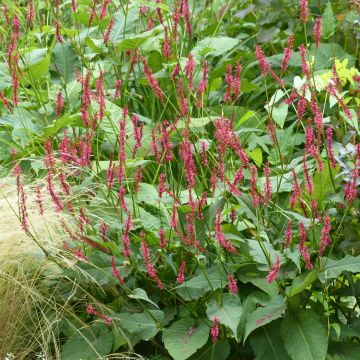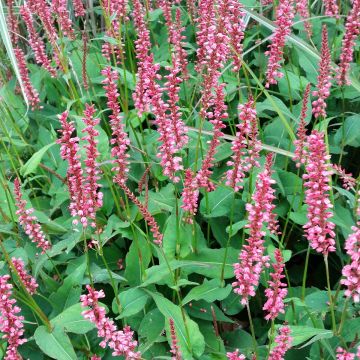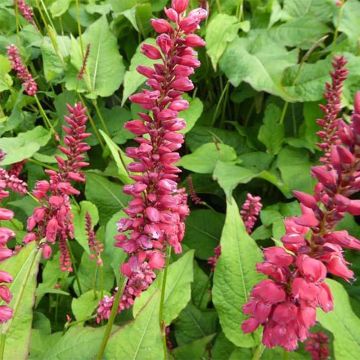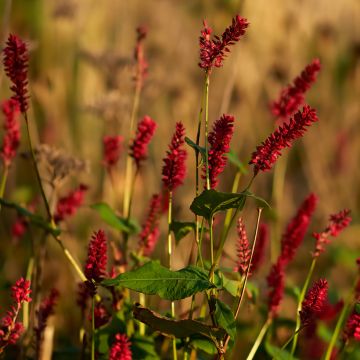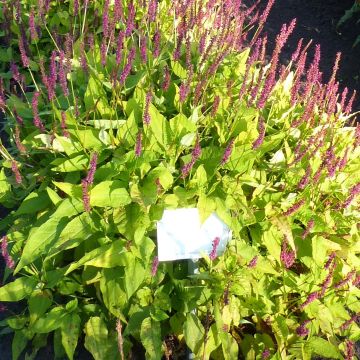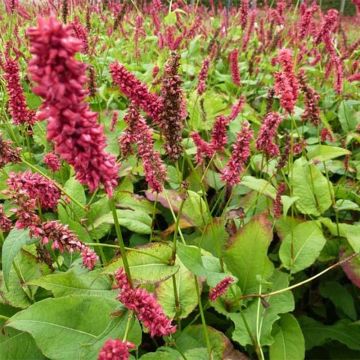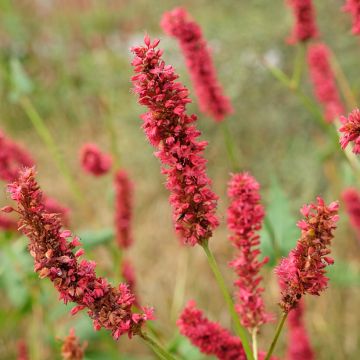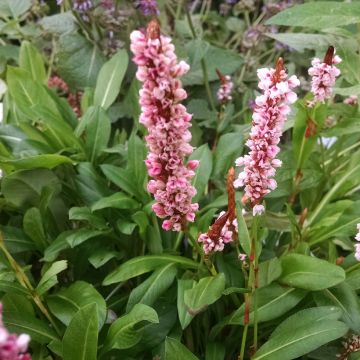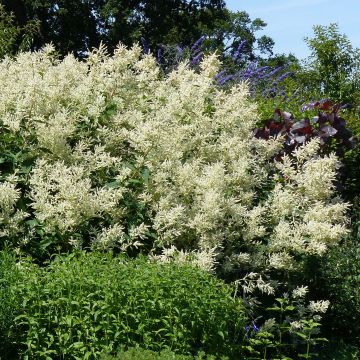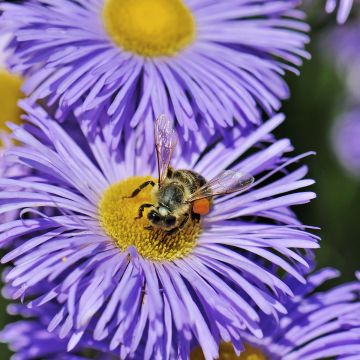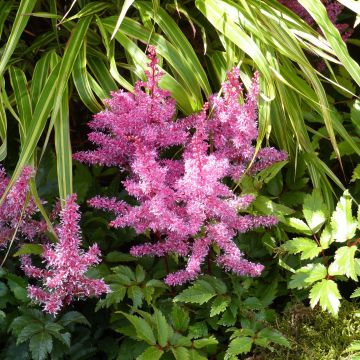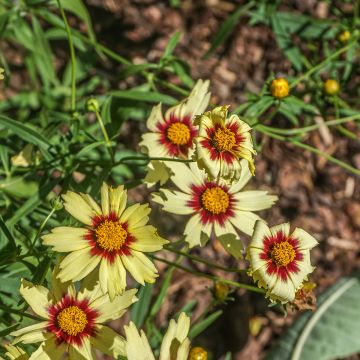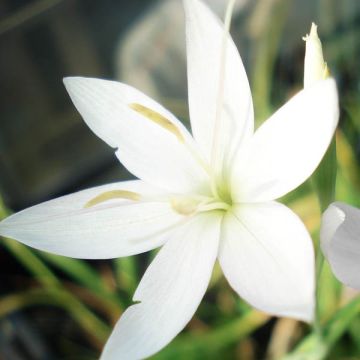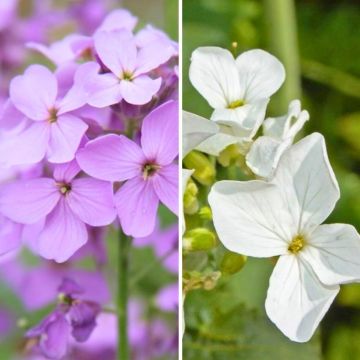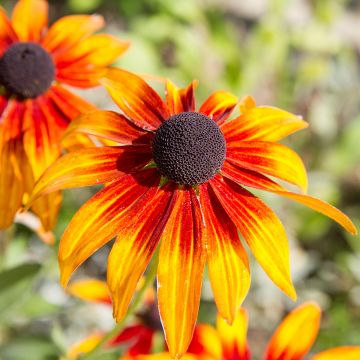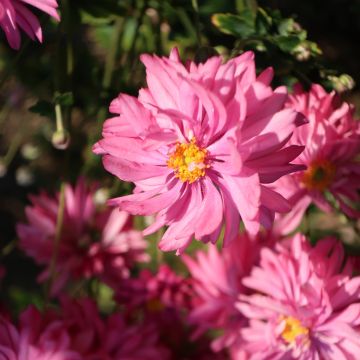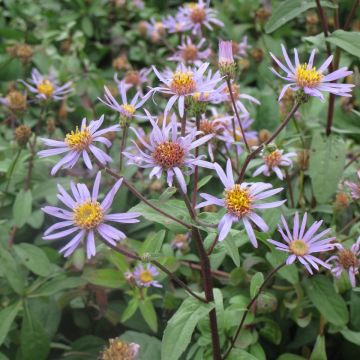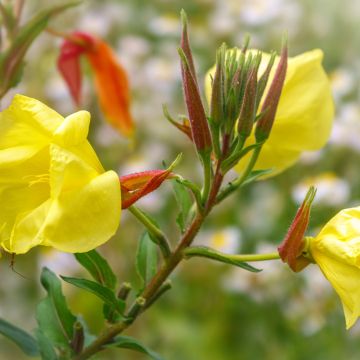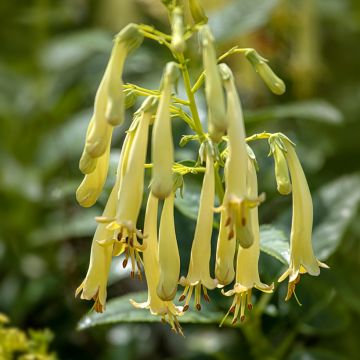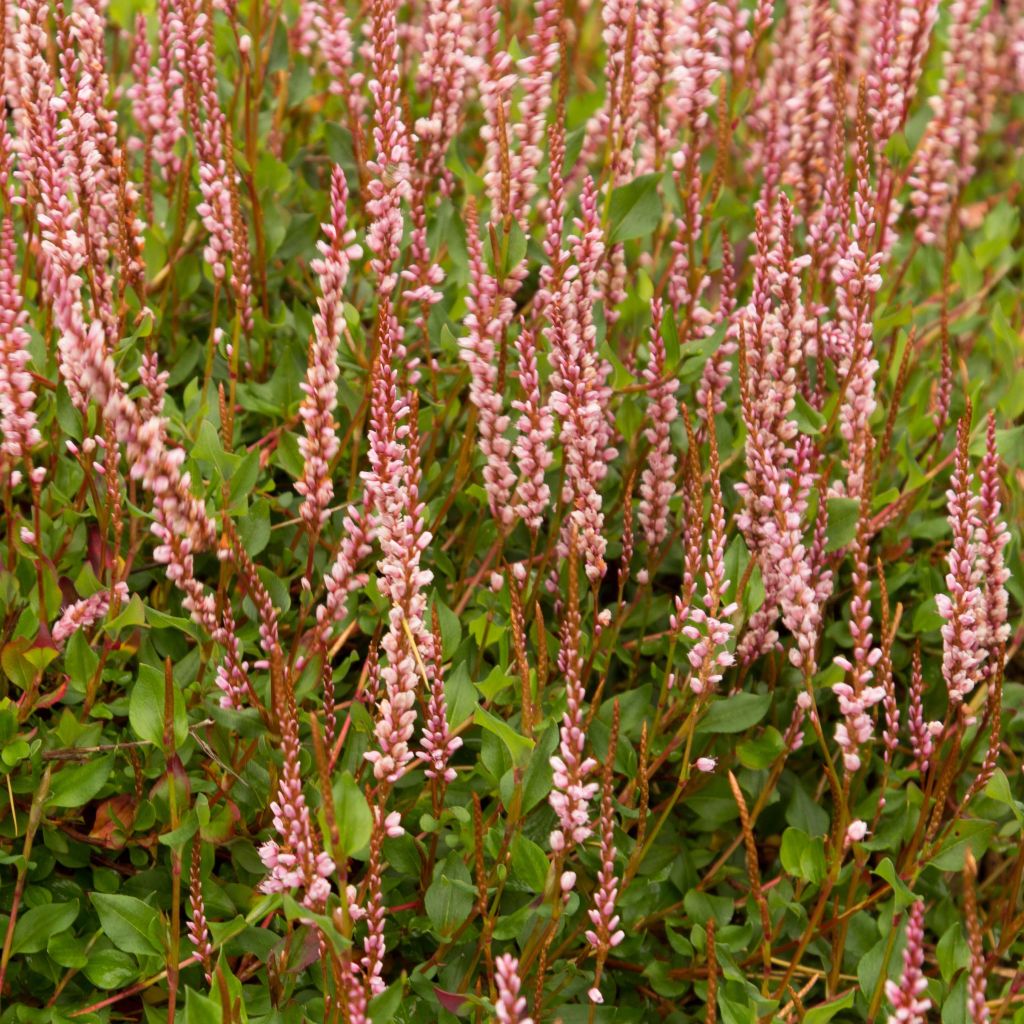

Persicaria vacciniifolia - Knotweed
Persicaria vacciniifolia - Knotweed
Persicaria vacciniifolia
Cranberry Knotweed, Vaccinium-leaved Knotweed
This item cannot be shipped to the selected country
Delivery charge from €5.90
Delivery charge from €5.90
More information
Schedule delivery date,
and select date in basket
This plant carries a 12 months recovery warranty
More information
We guarantee the quality of our plants for a full growing cycle, and will replace at our expense any plant that fails to recover under normal climatic and planting conditions.
From €5.90 for pickup delivery and €6.90 for home delivery
Express home delivery from €8.90.
From €5.90 for pickup delivery and €6.90 for home delivery
Express home delivery from €8.90.
Does this plant fit my garden?
Set up your Plantfit profile →
Description
The Creeping Knotweed or Persicaria vacciniifolia is a small creeping perennial that is quite attractive for planting at the base of trees or in fresh rockeries. Its lovely dense foliage is vibrant green and glossy. It thrives in partial shade and adds colour in autumn with its reddish-brown hues. Its numerous spikes proudly stand throughout the summer, displaying a beautiful pink colour and reddish stems. Hardy and easy to grow, it thrives in moist and rich soil.
Also known as Bilberry-leaved Knotweed, this Persicaria belongs to the Polygonaceae family. It gets its nickname from its numerous small elliptical leaves (1-2 cm (0-1in)) with acute tips. These leathery leaves, with their vibrant green colour, change hues in autumn, turning from red to brown. Very shiny on the upper surface, they capture every ray of sunlight. They are borne on beautiful reddish woody and highly branched stems. Creeping, they spread over an area that can reach up to 50 cm (20in) in diameter. From the beginning of summer, they are topped with spikes measuring 3 to 7 cm (1 to 3in) long, composed of multiple small flowers clustered together. Initially red in bud, they reveal a delicate pink when they bloom. The plant then reaches a height of about twenty centimetres.
Persicaria vacciniifolia prefers moist and rich substrates and thrives in partial shade. It can tolerate a sunny exposure if the soil does not dry out or if the nights remain humid.
Along the edge of a fresh flowerbed, in a woodland or at the base of a watered wall, this Creeping Knotweed offers a beautiful brightness with its glossy foliage and its flowering in vibrant and soft hues. Resistant, low-maintenance, and vigorous, it finds its place in mild to cool climates where it brings a long-lasting beautiful flowering and a natural style.
Report an error about the product description
Persicaria vacciniifolia - Knotweed in pictures
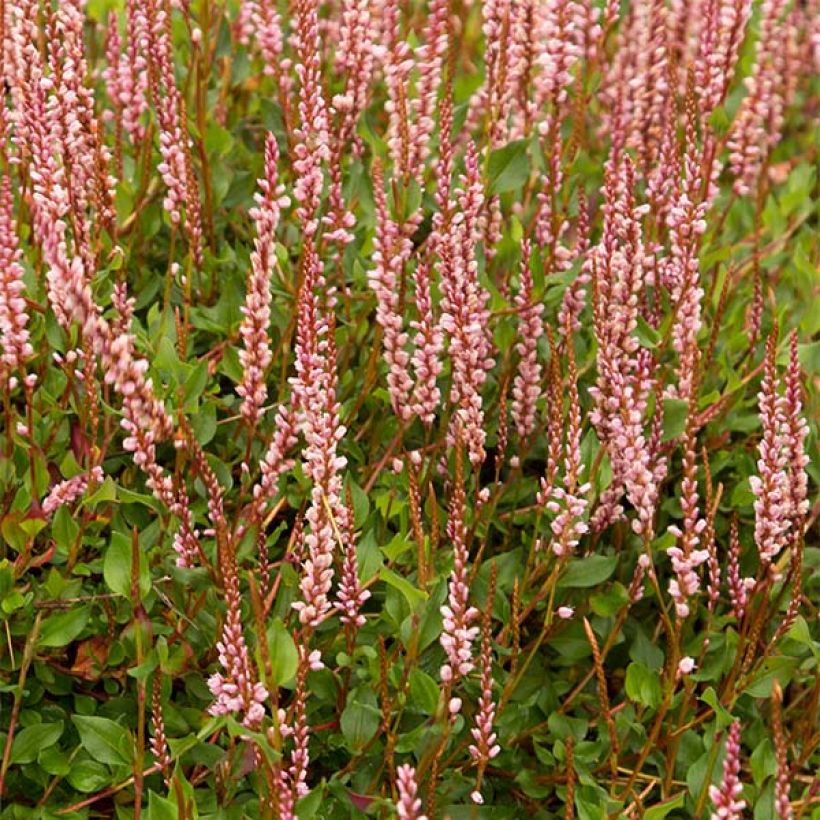

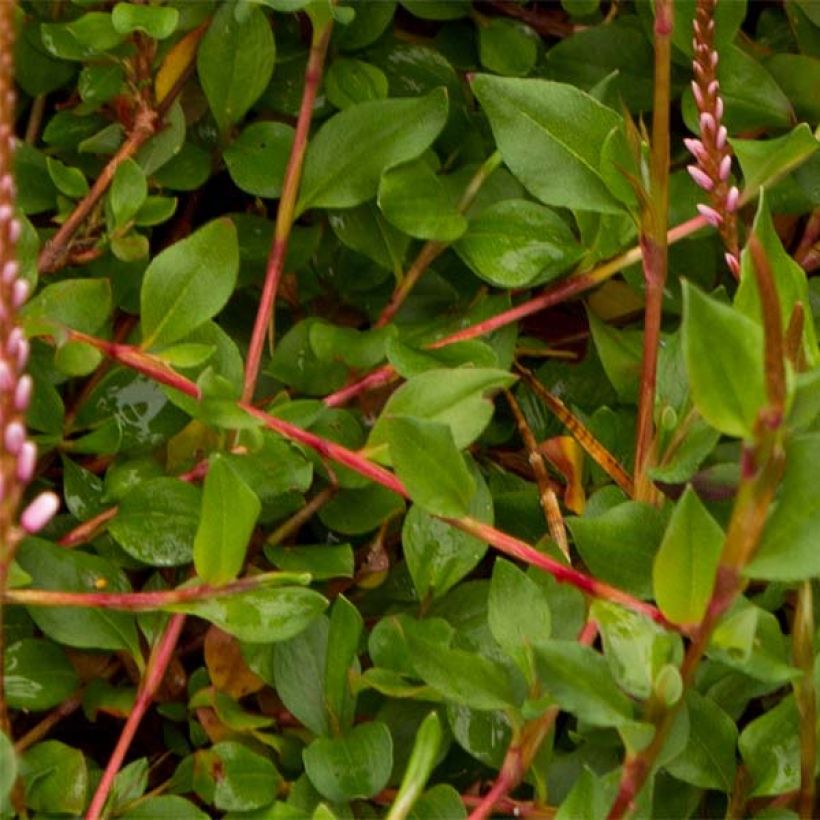

Flowering
Foliage
Plant habit
Botanical data
Persicaria
vacciniifolia
Polygonaceae
Cranberry Knotweed, Vaccinium-leaved Knotweed
Cultivar or hybrid
Other Persicaria
Planting and care
Persicaria vacciniifolia thrives in cool and rich soil. Therefore, you should plant this perennial in spring or autumn in a fresh rockery, at the edge of a well-watered flower bed, or on the edge of a woodland. It also finds its place at the base of trees and bushes if the substrate remains moist. It prefers partial shade, but can also adapt to a sunny exposure that is not too scorching or drying. It is not afraid of the cold and its foliage can be semi-evergreen depending on the temperatures.
In favorable conditions, it develops vigorously and sometimes needs to be limited. Occasionally, it is necessary to intervene to slow down the progression of the roots.
A winter or late winter cleanup allows for the removal of faded stems.
Planting period
Intended location
Care
-
, onOrder confirmed
Reply from on Promesse de fleurs
Summer flowering perennials
Haven't found what you were looking for?
Hardiness is the lowest winter temperature a plant can endure without suffering serious damage or even dying. However, hardiness is affected by location (a sheltered area, such as a patio), protection (winter cover) and soil type (hardiness is improved by well-drained soil).

Photo Sharing Terms & Conditions
In order to encourage gardeners to interact and share their experiences, Promesse de fleurs offers various media enabling content to be uploaded onto its Site - in particular via the ‘Photo sharing’ module.
The User agrees to refrain from:
- Posting any content that is illegal, prejudicial, insulting, racist, inciteful to hatred, revisionist, contrary to public decency, that infringes on privacy or on the privacy rights of third parties, in particular the publicity rights of persons and goods, intellectual property rights, or the right to privacy.
- Submitting content on behalf of a third party;
- Impersonate the identity of a third party and/or publish any personal information about a third party;
In general, the User undertakes to refrain from any unethical behaviour.
All Content (in particular text, comments, files, images, photos, videos, creative works, etc.), which may be subject to property or intellectual property rights, image or other private rights, shall remain the property of the User, subject to the limited rights granted by the terms of the licence granted by Promesse de fleurs as stated below. Users are at liberty to publish or not to publish such Content on the Site, notably via the ‘Photo Sharing’ facility, and accept that this Content shall be made public and freely accessible, notably on the Internet.
Users further acknowledge, undertake to have ,and guarantee that they hold all necessary rights and permissions to publish such material on the Site, in particular with regard to the legislation in force pertaining to any privacy, property, intellectual property, image, or contractual rights, or rights of any other nature. By publishing such Content on the Site, Users acknowledge accepting full liability as publishers of the Content within the meaning of the law, and grant Promesse de fleurs, free of charge, an inclusive, worldwide licence for the said Content for the entire duration of its publication, including all reproduction, representation, up/downloading, displaying, performing, transmission, and storage rights.
Users also grant permission for their name to be linked to the Content and accept that this link may not always be made available.
By engaging in posting material, Users consent to their Content becoming automatically accessible on the Internet, in particular on other sites and/or blogs and/or web pages of the Promesse de fleurs site, including in particular social pages and the Promesse de fleurs catalogue.
Users may secure the removal of entrusted content free of charge by issuing a simple request via our contact form.
The flowering period indicated on our website applies to countries and regions located in USDA zone 8 (France, the United Kingdom, Ireland, the Netherlands, etc.)
It will vary according to where you live:
- In zones 9 to 10 (Italy, Spain, Greece, etc.), flowering will occur about 2 to 4 weeks earlier.
- In zones 6 to 7 (Germany, Poland, Slovenia, and lower mountainous regions), flowering will be delayed by 2 to 3 weeks.
- In zone 5 (Central Europe, Scandinavia), blooming will be delayed by 3 to 5 weeks.
In temperate climates, pruning of spring-flowering shrubs (forsythia, spireas, etc.) should be done just after flowering.
Pruning of summer-flowering shrubs (Indian Lilac, Perovskia, etc.) can be done in winter or spring.
In cold regions as well as with frost-sensitive plants, avoid pruning too early when severe frosts may still occur.
The planting period indicated on our website applies to countries and regions located in USDA zone 8 (France, United Kingdom, Ireland, Netherlands).
It will vary according to where you live:
- In Mediterranean zones (Marseille, Madrid, Milan, etc.), autumn and winter are the best planting periods.
- In continental zones (Strasbourg, Munich, Vienna, etc.), delay planting by 2 to 3 weeks in spring and bring it forward by 2 to 4 weeks in autumn.
- In mountainous regions (the Alps, Pyrenees, Carpathians, etc.), it is best to plant in late spring (May-June) or late summer (August-September).
The harvesting period indicated on our website applies to countries and regions in USDA zone 8 (France, England, Ireland, the Netherlands).
In colder areas (Scandinavia, Poland, Austria...) fruit and vegetable harvests are likely to be delayed by 3-4 weeks.
In warmer areas (Italy, Spain, Greece, etc.), harvesting will probably take place earlier, depending on weather conditions.
The sowing periods indicated on our website apply to countries and regions within USDA Zone 8 (France, UK, Ireland, Netherlands).
In colder areas (Scandinavia, Poland, Austria...), delay any outdoor sowing by 3-4 weeks, or sow under glass.
In warmer climes (Italy, Spain, Greece, etc.), bring outdoor sowing forward by a few weeks.


































